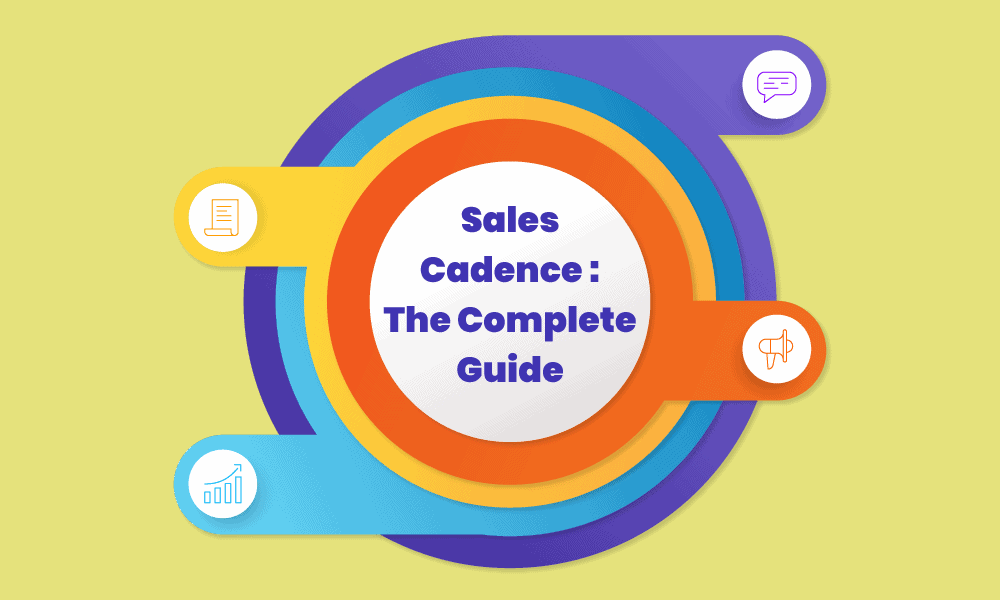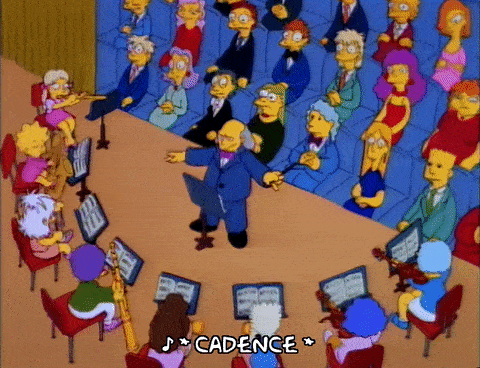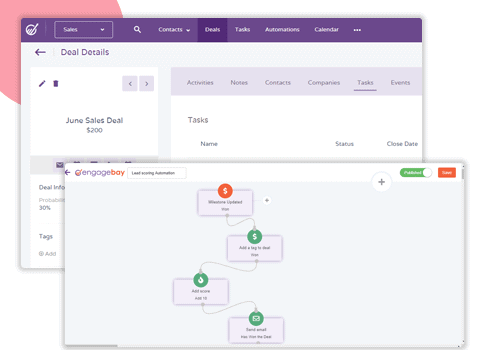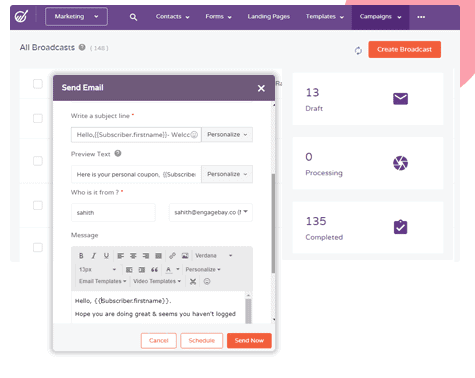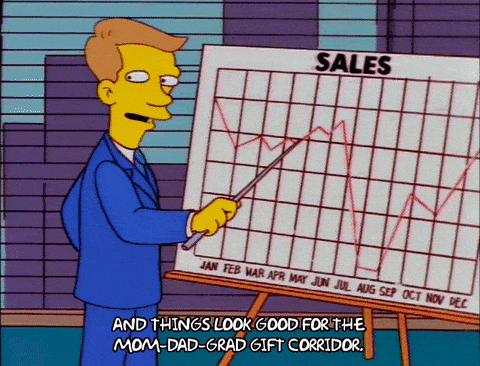Don’t you like to groove to your favorite rhythm or enjoy a catchy melody? Well, you feel good after listening to music because of the cadence. A cadence is nothing but a rhythmic sequence, but it can apply to sales too.
Let us talk about sales cadence in this article.
Sales cadence is often used in correlation with digital marketing to describe the actions of an organization.
Whether you’re designing an inside sales process, writing a sales proposal or plotting a sales strategy, you will not get the desired results if you do not have a proper plan.
According to a blog by due.com, prospects need to hear from you around seven times before they make a purchase.
If a lead is not responding to your calls or emails, it doesn’t necessarily mean they aren’t interested. They could just need a follow-up.
Sales cadence will teach you when to follow up and how long to wait between attempts. In this guide, we’ll tell you everything you need to know about sales cadence, including examples you can emulate.
Table of Contents
What is Sales Cadence?
Sales cadence refers to a rhythmic sequence for establishing a connection with a prospect or potential buyer.
Some of the most common touchpoints included in sales cadence are emails, phone calls, and social media activity.
In a cadence, all these activities are combined and scheduled in strategic intervals. This flow of interactions will tell you which prospects are worth spending time on and what is the most effective way to engage with the leads.
Cadence, as you recall from the intro, is another way of describing rhythm or a tempo. Sales cadence involves getting your client-side team “grooving” into a rhythm that will help you attract leads and improve sales over time.
By the time the song is over, your prospects should be convinced into becoming clients.
Why do you need a Sales Cadence?
No matter the size of your sales team, implementing an appropriate sales cadence can make the process of client prospecting much more efficient and effective.
The purpose of building a sales cadence is to get in touch with leads across multiple channels (such as phone, email, or social media) and see which medium gives the best results.
You may need to interact with the same leads more than once with different channels to understand what they prefer and are most receptive on.
Adopting a successful sales cadence is beneficial not only for your organization but also for your sales representatives.
For every prospect that enters the CRM system, the sales representatives have a follow-up sequence of calls or emails in their mind.
A pre-determined concrete framework can help in eliminating guesswork and maintain consistency between every interaction with the lead. It’s important to contact a prospect more than once to close a deal.
You must be familiar with the concept of outbound sales before you proceed. Outbound sales occurs when a sales agent initiates customer engagement from its end.
When the lead gives out their contact information out via a form, it is referred to as warm calling. If a seller contacts who he/she thinks are potential buyers, it is done by placing cold calls.
As opposed to inbound selling, where sales representatives wait for leads to call and inquire about a product or service, outbound selling is more aggressive.
Combining your outbound sales strategy with a sales cadence could certainly enhance engagement and boost your business.
Since an outbound sales cadence encourages each of your sales representatives to follow a structured, consistent process, it can be used as one of the primary metrics for predicting accurate results.
How to Build the Ultimate Outbound Sales Cadence – A Video:
[su_youtube url=”https://www.youtube.com/watch?v=O1fWN5ufj2s” title=”How to Build the Ultimate Outbound Sales Cadence”]
How to Build Sales Cadence
If your company is committed to building sales cadence, doing so requires following these steps:
- Learning about your target audience
- Determining your communication method
- Making contact
- Waiting after initial contact
- Planning for cadence duration
- Sending relevant content
Let’s go over these seven steps in more detail now.
Learning about Your Target Audience
Who are the people that comprise your target audience? Where do they live? How much money do they make? What are their pain points?
In answering those questions, you can begin the process of developing sales cadence within your company. Buyer personas could help you develop and refine your target audience if you need further assistance.
We also recommend segmenting your leads at this time too.
Determining Your Communication Method
The second stage of building sales cadence is deciding how you’ll communicate with your leads. Sales cadence isn’t about becoming reliant on only one communication method, but rather, using many.
You can gauge which method might be most fruitful by looking at the communication options your audience most prefers. Then, gravitate towards those primarily.
Making Contact
This is one of the more drawn-out parts of establishing a sales cadence. You can’t expect your first contact to necessarily pan out, and it may take between eight and 12 touchpoints before you can progress to the next step.
Waiting After Initial Contact
Yes, we said eight to 12 touchpoints above. Don’t worry, you’re not calling your leads eight times in one day.
You need to give the lead space to breathe and decide if they want to get back to you. If not, then might follow up after a few days, then try following up again if necessary.
Accelerate business growth and improve your team’s productivity with EngageBay’s powerful Sales Automation
Planning for Cadence Duration
In determining when you’ll reach out to your contacts and how often, it helps to know the average duration of sales cadence. That’s between two and four weeks.
Your sales cadence can be longer and sometimes even shorter if you’re lucky!
Sending Relevant Content
Now that you’ve got your lead’s attention, keep it with well-written content. In segmenting your leads, each bucket should receive highly relevant, engaging content that will resonate with them.
What are the advantages of Sales Cadence
- 1. Scalability
- 2. Easy tracking of the progress
- 3. Focused effort
Let’s next go through some of the advantages you can avail after implementing a perfect cadence of sales.
1. Scalability
With proper sales cadence, scalability is not that difficult. Sales representatives can easily organize information about all the leads. Moreover, it also helps in enlisting others to work with them.
With concise illustrations such as flowcharts or flow diagrams, you can easily describe your sales strategy to any new sales rep you hire. This will allow them to join the working force right away.
2. Tracking your progress
Once you have a clearly-defined sales cadence, you can easily track your sales process. If you need to make any changes and refine, you can do so right away.
Suppose you have a seven-step process in place. A clearly defined cadence in sales can assist you in knowing at what stage you are at with each client.
Moreover, it will also tell on which step you tend to start losing the prospects.
Once you have clear information on what is wrong with your approach, you can begin refining it. For example, if you see that your leads are responding better to calls than emails, you can use that approach in the earlier steps.
3. Focused efforts
With sales cadence, you can set up a model that suits your business the best. You can decide on the time interval after which you wish to contact your leads.
You might send them an email daily, every two days, or weekly based on their response and your requirements.
Key Elements of Sales Cadence
- 1. Timing
- 2. Channel
- 3. Email
- 4. Phone calls
- 5. Social Media
Building the best Sales Cadence is not a straightforward process. It involves intensive trial and error until you find out what works the best for you and your target audience.
Here are some of the things that should be aware of to make your sales cadence more effective.
1. Timing
Timing is a critical factor for scheduling a sales call cadence. You cannot predict what a prospect is doing throughout the day, but based on their profile, you can infer when they are most likely to be available.
There is not anything like the best time of the day to contact a prospect which will guarantee higher response rates.
You can experiment with different times to see when your response and open rates go up. Once you find the appropriate timing, you can stick to it.
Also, you must take into account the time zone the person you are contacting. You do not want all your efforts to go in vain just because you’re sending the messages at wrong times.
2. Channel
To know which communication medium works the best, you must try engaging with prospects via different channels. The three main channels in an inside sales cadence are email, phone calls, and social media.
Grow your business with EngageBay’s powerful email marketing
3. Email
Email is one of the most popular sales cadence channels and is likely going to be the first touchpoint. The best part about email is that you can even send relevant pictures that make the content attractive.
You must organize the rest of your sales cadence to go with the content of your sales email.
4. Phone calls
Phone calls are an important part of your sales cadence as they offer you the complete attention of your prospects. Your sale pitch on call should be concise and not bore the person on the other end.
5. Social Media
With the boom of the Internet, social media has emerged as an effective platform for communication with users.
However, it might take some time before you even see some engagement. It takes some time to build a network and professional identity of the brand online.
Examples of Sales Cadence
Do you want to see sales cadence in action? We’ll show you the flow of a short sales cadence and a longer one so you can see where your cadence compares!
Five-Day Sales Cadence Example
We said before that some sales cadences are less than two weeks, and this is one such example of that.
On the first day of the cadence, the sales team sent two emails. Then, they waited until the second day to mail out their third message.
By day three, the sales team was onto their first phone call and a voicemail to go with it. On the fourth day, they expanded to social media communications and sent a fourth email.
The fifth day was jam-packed. It included a second social media post, a fifth email, and a second phone call.
Why does this brief sales cadence work? It utilizes all sorts of communication methods, using email as the main crux.
Also, the timing between touchpoints is consistent but not overbearing.
Seventy-Seven Day Sales Cadence Example
Our second example involves a very drawn-out sales cadence. This one lasted 77 days in all, which is sometimes necessary depending on your sales objectives.
Here’s how it went down.
On the first day, the sales team sent an initial email and that was it. By the second day, they followed up with another email and added the first call with an accompanying voicemail.
A week into the sales cadence, the third email went out. The sales team had also made their second phone call with a second voicemail.
Another week after that, on day 14, the sales team had only progressed to the fourth email and the third call with voicemail. By day 21, it was up to five emails and four calls with voicemails.
Over a month into the sales cadence, on day 35, the sales team sent out the sixth email and followed up with the fifth phone call and voicemail. Reaching day 49, it was email number seven and six phone calls with voicemails.
At day 63, the sales team had sent eight emails altogether and made seven phone calls with voicemails.
Finally, wrapping up this sales cadence at 77 days, the sales team sent a final ninth email and dialed an eighth phone call with voicemail.
With more than 25 touchpoints, these were very comfortably spaced out so as not to overwhelm the recipient.
How do I track sales cadence?
Many sophisticated tools are available in the market to keep track of everything. Sales representatives can use calendars or to-do-lists to manage and assign everyday tasks.
Calendars are a great way to keep a check on the starting and the ending dates of sales cadence process.
To-do-lists help in marking touchpoints as bullets on the list and build them into the daily workflow. These are just some basic sales cadence tools that will help in managing activities within a cadence.
If you are looking for more advanced software solutions, you can go for a feature-loaded platform like EngageBay.
It is an integrated Marketing, Sales and Service platform and comes with a free in-built CRM. This can help you in organizing your contact and sales appointments in one place.
Don’t miss this video walking you through EngageBay’s CRM and its features:
[su_youtube url=”https://www.youtube.com/watch?v=spWnnhxT098″ title=”EngageBay CRM features”]
How to Measure Sales Cadence Results
Sales cadence is a metric-driven phenomenon. After all, if you cannot measure its effectiveness, there is no point in spending time into building one.
To see the performance of your sales cadence, you must check the engagement achieved after implementing it. Based on the nature of the business, the definition of engagement may change.
For example, you can take into account the response rate and the total number of sales appointments booked. First, you will keep a track of how many people replied to an email, answered your phone call, or interacted with you on social media.
Later, you can see how many of these responses actually qualified into successful sales meetings.
Once the sales cadence ends, it is important to know whether it was successful or not.
If it was, you can consider using the same principles for the next group of contacts. If it was not, you can make some tweaks and refinements to make it better and suit your needs.
Remember, sales cadence is a trial and error process and there is no concrete solution for a problem.
Continuing with these sales cadence best practices you can organize a framework of touchpoints and you will be able to create great sales cadences to boost the overall efficiency of your work.
Conclusion
Sales cadence is your rhythm of communication with your leads, not unlike your favorite song.
By building cadence into your sales approach, you can ensure you don’t bombard your audience with emails, social media posts, or phone calls. This makes them more receptive to your offers.

